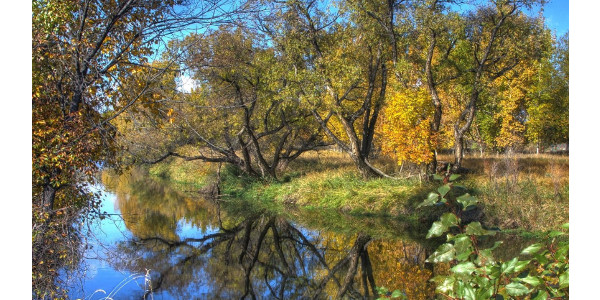
Why Ask if Your Watershed is Healthy?
What is a watershed? A watershed is a land area defined by the main river or stream that drains it. Stretching west to east, from the mountains to the plains, the North Fork of the Cache la Poudre Watershed encompasses about 400,000 acres. This is the last remaining watershed on Colorado’s northern Front Range, where flying parallel along the Colorado-Wyoming border and going west from Interstate 25 to the continental divide would reveal a bird’s eye of a large, connected landscape, where rolling grasslands grade into rugged shrublands on sandstone and limestone mesas and buttes, and then rise up into dense forests at higher elevations. Winding tributaries of the North Fork water this landscape, creating green ribbons of lush streamsides and wetlands. Thanks to the efforts of individuals and organizations, 110,000 acres of public lands are connected to over 100,000 acres of conserved private lands, making this watershed unique.
Why care if your watershed is healthy? We all benefit, directly and or indirectly, from healthy watersheds. Watersheds provide us with opportunities to walk, hike, ride, watch wildlife, hunt, fish, enjoy solitude, eat local food, and drink a local brew. Farmers, ranchers, loggers, and small and large business owners rely on healthy watersheds to produce the goods and services for our quality of life as we work and play.
How do you know if a watershed is healthy? Some wildlife is more sensitive to human activities than others. Coyotes, American robin, black-billed magpie, red fox, and white-tail deer are often found close to humans. Some species can become so comfortable they can become a nuisance, like fox squirrels and black bears. Others, like bobcats, river otters, greenback cutthroat trout, and yellow-breasted chat, are more sensitive, and hence more secretive, less often seen and heard near people. When the full complement of native species occurs in abundance a watershed is considered healthy.
Expansion of human activity into watersheds may displace and replace the more sensitive species. The presence of such species enables us to measure watershed health; the more that occurs, the healthier the watershed. One particularly sensitive species that once occurred from southeastern Wyoming to northern Colorado is Preble’s Meadow Jumping Mouse. Preble’s mouse is unique; active at night, hibernate during the fall and winter, swims underwater, can leap and bound, eats seeds and insects, and is tied to streamsides. Human development has altered much of its historic range. So much so, that in 1998 Preble’s mouse was listed as threatened under the Endangered Species Act.
There is good news, however. Today, thanks to good stewardship of private landowners and land management organizations, the North Fork Poudre still supports a large population of Preble’s mice. What is our role in maintaining watershed health? People are everywhere and must be somewhere. Meaning, knowingly or unknowingly, we bring impacts with us into our watersheds. Watersheds, therefore, don’t stay healthy on their own, unattended. They require our stewardship.
Neighbors being good neighbors, making fences wildlife-friendly, reducing weeds that outcompete natives, grazing so vegetation holds soil and slows the erosive power of water, keeping infrastructure away from sensitive areas, turning lights off at night, keeping our dear pets close, and healing areas with native species when needed. Working together we can help ensure lands and waters across the North Fork remain healthy. One such group is doing just that: The North Fork Poudre Watershed Species Conservation Team (SCT). The Poudre SCT, a first-of-its-kind group, aims to work with the local community to achieve the best solutions for people and PMJM.
Want to know more about Preble’s mouse and being a good steward in the North Fork Poudre? Go to the SCT website collaborativeconservation.org Attend the upcoming North Fork Poudre Watershed Tour on September 10, 2022.
Support Northern Colorado Journalism
Show your support for North Forty News by helping us produce more content. It's a kind and simple gesture that will help us continue to bring more content to you.
BONUS - Donors get a link in their receipt to sign up for our once-per-week instant text messaging alert. Get your e-copy of North Forty News the moment it is released!
Click to Donate
